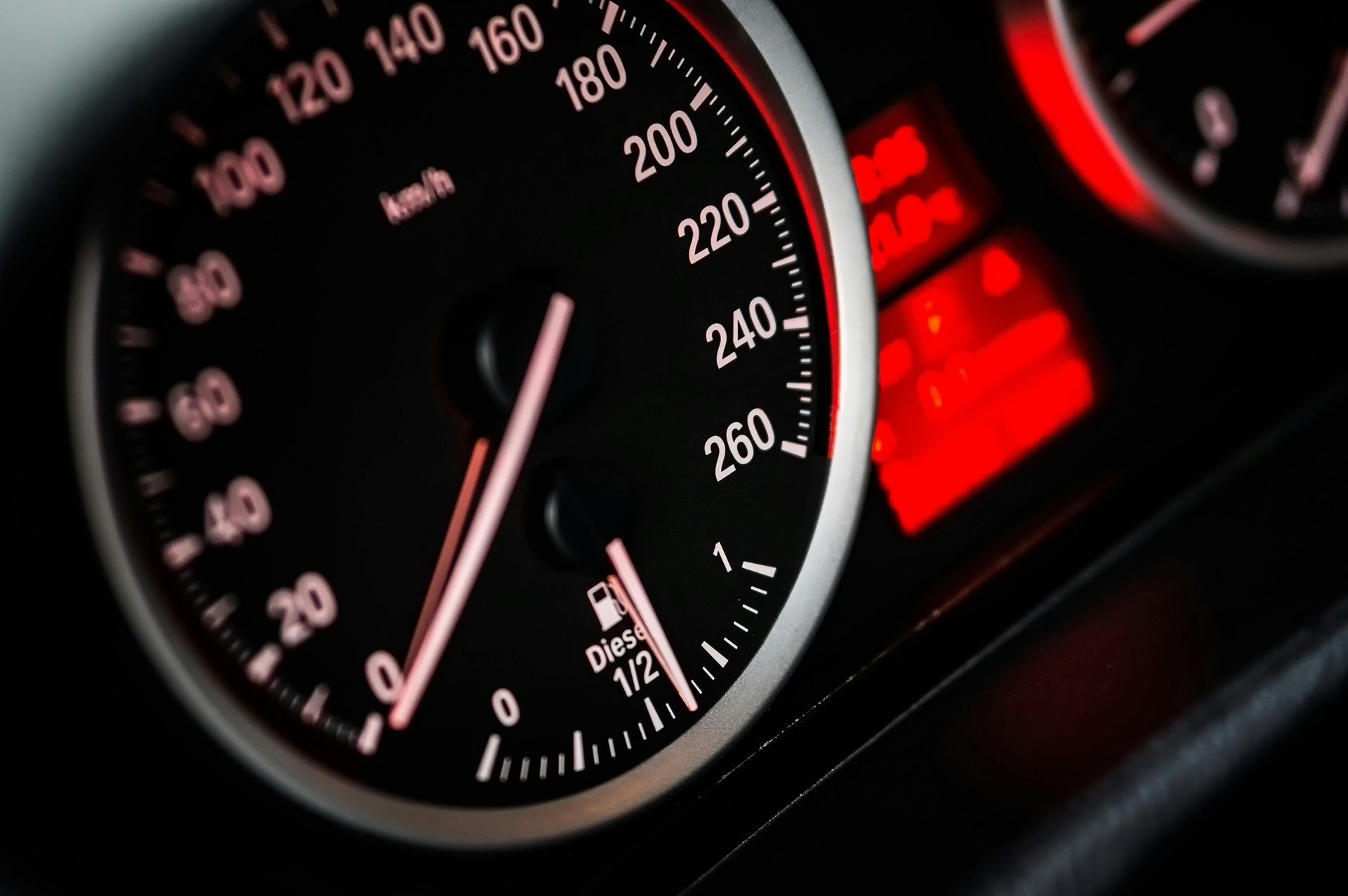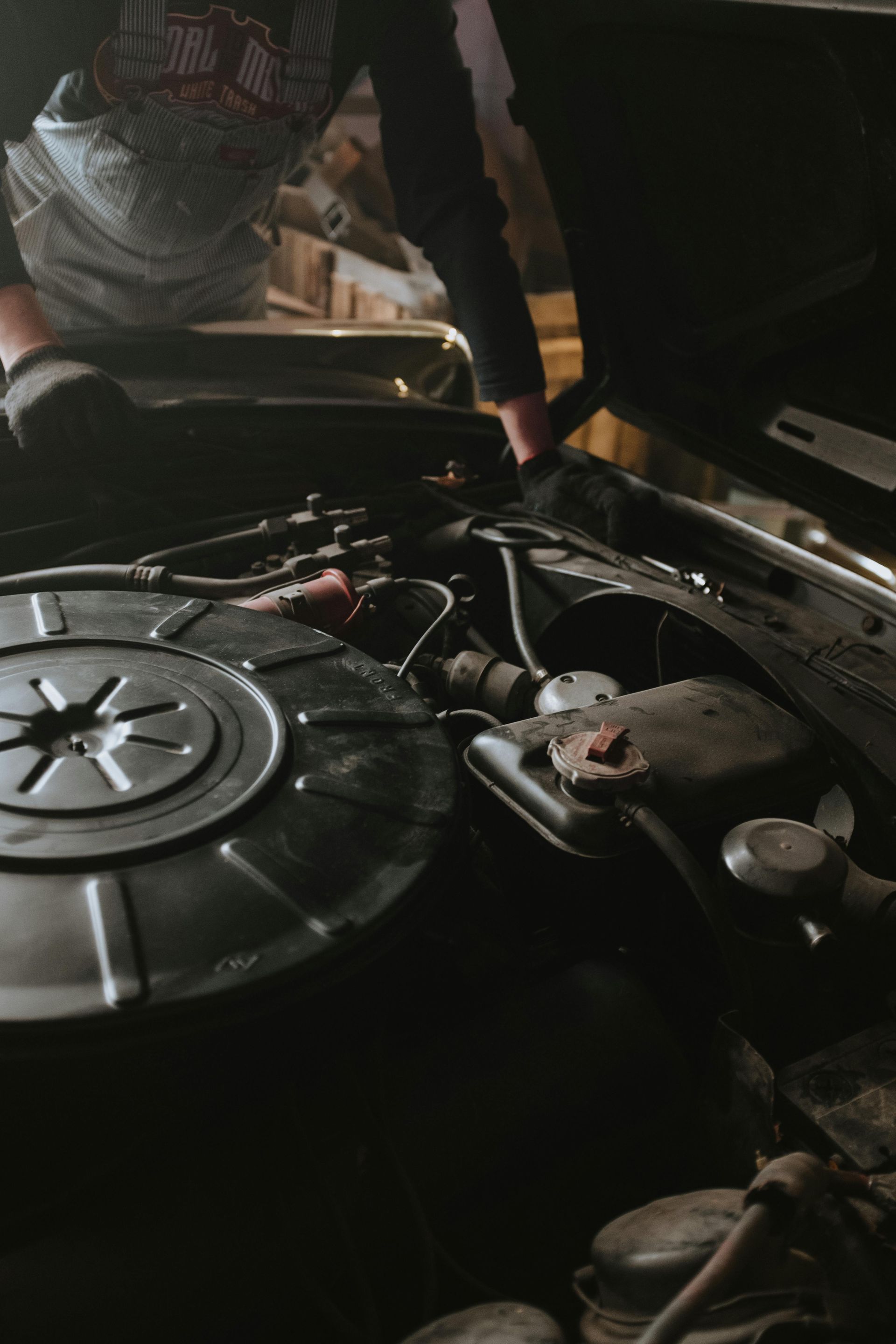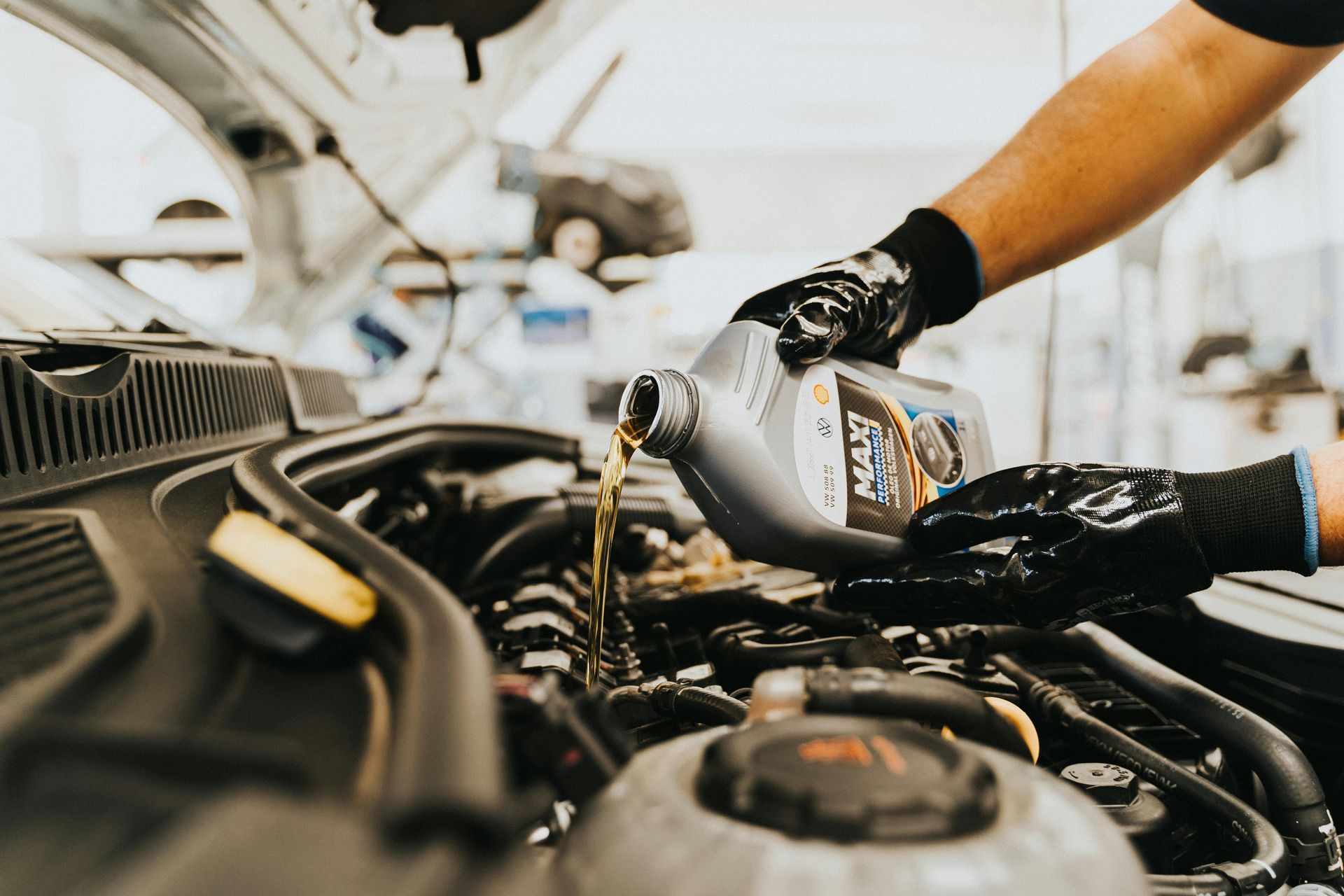Your Action Plan When the Check Engine Light Appears in Warrenton
Few dashboard warnings cause as much anxiety as the dreaded check engine light. For drivers in Warrenton and throughout Northern Virginia, this amber warning can appear at the most inconvenient times—during morning commutes to DC, family trips around Fauquier County, or while running errands around town. Knowing how to respond appropriately can save you money, prevent damage, and keep you safe on the road.
The check engine light serves as your vehicle's way of communicating that its computer system has detected a problem with the engine, transmission, or emissions system. While this warning can indicate anything from a loose gas cap to serious engine damage, your response should be measured and informed rather than panicked.
What the Check Engine Light Actually Means
Your Car's Diagnostic System at Work
Modern vehicles continuously monitor dozens of systems using sensors and computer controls. When the onboard diagnostic system (OBD) detects a problem that could affect emissions, performance, or engine protection, it illuminates the check engine light and stores a diagnostic trouble code in the computer's memory.
Different Warning Levels
Steady Light: Indicates a problem that needs attention but usually allows continued driving. You should schedule service soon but don't need to stop immediately.
Flashing Light: Signals serious problems like engine misfires that can cause expensive damage quickly. Pull over safely and shut off the engine when possible.
Light with Other Symptoms: If the check engine light appears with overheating, loss of power, or unusual noises, treat it as an emergency requiring immediate attention.
Immediate Steps When the Light Appears
Stay Calm and Assess the Situation
Don't panic when the check engine light comes on. Take a moment to notice if your vehicle is running normally or showing other symptoms. Many check engine light problems don't require immediate stopping.
Check for Obvious Issues
Gas Cap: A loose or missing gas cap triggers the check engine light in many vehicles. Make sure your cap is tight and properly seated.
Recent Maintenance: If you've recently had service work done, the light might indicate a loose connection or sensor that wasn't properly reconnected.
Fuel Quality: Bad gas from contaminated sources can trigger emissions-related codes. Consider where you last filled up.
Monitor Vehicle Performance
Pay attention to how your car runs after the light appears:
- Does it idle smoothly?
- Is acceleration normal?
- Are there unusual noises or vibrations?
- Does the engine seem to misfire or hesitate?
When to Continue Driving Safely
Steady Light with Normal Performance
If the check engine light is steady and your vehicle runs normally, you can typically continue driving to your destination. However, avoid aggressive driving, high speeds, or towing heavy loads until the problem is diagnosed.
Local Driving Considerations
For Warrenton drivers, this means you can usually complete local errands or commute to work, but avoid demanding situations like:
- Long highway trips on Interstate 66
- Driving through mountainous areas that stress the engine
- Towing trailers or carrying heavy loads
- Extended idling in heavy traffic
Monitoring for Changes
Continue watching for symptoms that might indicate worsening problems. If the light begins flashing, performance deteriorates, or you notice overheating, pull over safely and seek immediate help.
When to Stop Driving Immediately
Flashing Check Engine Light
A flashing check engine light indicates engine misfires that can damage expensive components like catalytic converters. When you see a flashing light:
- Reduce speed immediately
- Avoid acceleration
- Pull over safely as soon as possible
- Turn off the engine
Additional Warning Signs
Stop driving if the check engine light appears with:
- Temperature warning lights
- Oil pressure warnings
- Unusual engine noises
- Significant loss of power
- Strong burning smells
Common Causes and Their Implications
Emissions System Problems
Oxygen Sensor Failure: Affects fuel economy and emissions but rarely causes immediate danger. Can continue driving with reduced efficiency.
Catalytic Converter Issues: May indicate upstream problems or converter failure. Continuing to drive can worsen damage and increase repair costs.
EVAP System Problems: Usually related to fuel vapor recovery systems. Often allows normal driving but affects emissions compliance.
Engine Performance Issues
Mass Airflow Sensor Problems: Can cause rough idle, poor acceleration, or reduced fuel economy. Usually allows continued driving but should be addressed promptly.
Ignition System Failures: Misfiring spark plugs or coils can cause rough running and potential engine damage if ignored.
Fuel System Problems: Issues with fuel injectors, fuel pumps, or pressure regulators can affect performance and should be diagnosed quickly.
The Diagnostic Process
Professional Scan Tools Required
While basic code readers are available at auto parts stores, professional diagnosis requires sophisticated scan tools that can access manufacturer-specific codes and perform system tests. This becomes especially important for Toyota and Lexus vehicles with complex electronic systems.
Beyond Basic Codes
Diagnostic trouble codes point technicians toward problem areas but don't always identify specific failed components. Professional diagnosis involves:
- Testing related systems
- Checking wiring and connections
- Verifying sensor operations
- Performing manufacturer-specific tests
Multiple Codes and Root Causes
Often, one failing component triggers multiple codes. Experienced technicians can identify root causes rather than just replacing parts indicated by individual codes.
What NOT to Do
Ignoring the Light
Continuing to drive indefinitely with an illuminated check engine light can:
- Cause additional damage to expensive components
- Reduce fuel economy significantly
- Lead to emissions test failures
- Void warranty coverage in some cases
Disconnecting the Battery
Some drivers disconnect the battery hoping to reset the check engine light. This approach:
- Doesn't fix the underlying problem
- Erases valuable diagnostic information
- May cause the light to return immediately
- Can affect other vehicle systems
Using "Quick Fix" Products
Fuel additives and other products claiming to fix check engine lights rarely address actual problems and may delay proper repairs.
Cost Considerations
Diagnostic Fees vs. Guesswork
Professional diagnosis may cost $100-150 but prevents expensive misdiagnosis. Random part replacement often costs much more and may not solve the problem.
Early Intervention Savings
Addressing check engine light problems promptly often prevents more expensive damage. For example, replacing a faulty oxygen sensor prevents catalytic converter damage that costs much more.
Warranty Protection
Proper diagnosis and repair protect your vehicle's warranty coverage. Ignored problems or improper repairs can void warranty protection for related components.
Local Resources and Considerations
Emissions Testing Requirements
Virginia requires emissions testing in certain areas, including parts of Northern Virginia. A check engine light typically means automatic emissions test failure, preventing vehicle registration renewal.
Choosing the Right Service Provider
For Toyota, Lexus, and Japanese vehicles, specialized knowledge becomes important. These vehicles often have manufacturer-specific diagnostic procedures and technical service bulletins that general repair shops might not access.
Emergency Situations
If you're traveling through rural areas around Warrenton when the check engine light appears, plan your route to stay near populated areas where help is available if the situation worsens.
Prevention and Early Detection
Regular Maintenance
Following manufacturer maintenance schedules helps prevent many check engine light problems. Regular services catch issues before they trigger warning lights.
Quality Fuel and Parts
Using quality fuel and genuine replacement parts reduces the likelihood of problems that trigger check engine lights.
Attention to Changes
Noticing subtle changes in your vehicle's performance often allows you to address problems before they trigger warning lights.
Technology and Modern Vehicles
Increased Sensitivity
Modern vehicles have much more sensitive monitoring systems than older cars. This means check engine lights may appear for problems that wouldn't have triggered warnings in the past.
Integration with Other Systems
Today's vehicles integrate engine management with transmission, braking, and other systems. This integration means check engine light problems can affect multiple vehicle functions.
Professional Check Engine Light Diagnosis in Warrenton
Don't let check engine light anxiety keep you guessing about your vehicle's condition. At Ish Auto Clinic, our ASE Master Certified technicians use advanced diagnostic equipment specifically designed for Toyota, Lexus, and Japanese vehicles. We'll quickly identify the root cause of your check engine light and provide honest recommendations for repairs.
Our comprehensive diagnostic process goes beyond basic code reading to perform actual system testing and verification. We'll explain exactly what's wrong, what it means for your vehicle's safety and performance, and provide transparent pricing for necessary repairs.
Located at 122 Sullivan St in Warrenton, we're here to eliminate the mystery of your check engine light. Call (540) 349-4178 today to schedule your diagnostic service and get back to worry-free driving.











